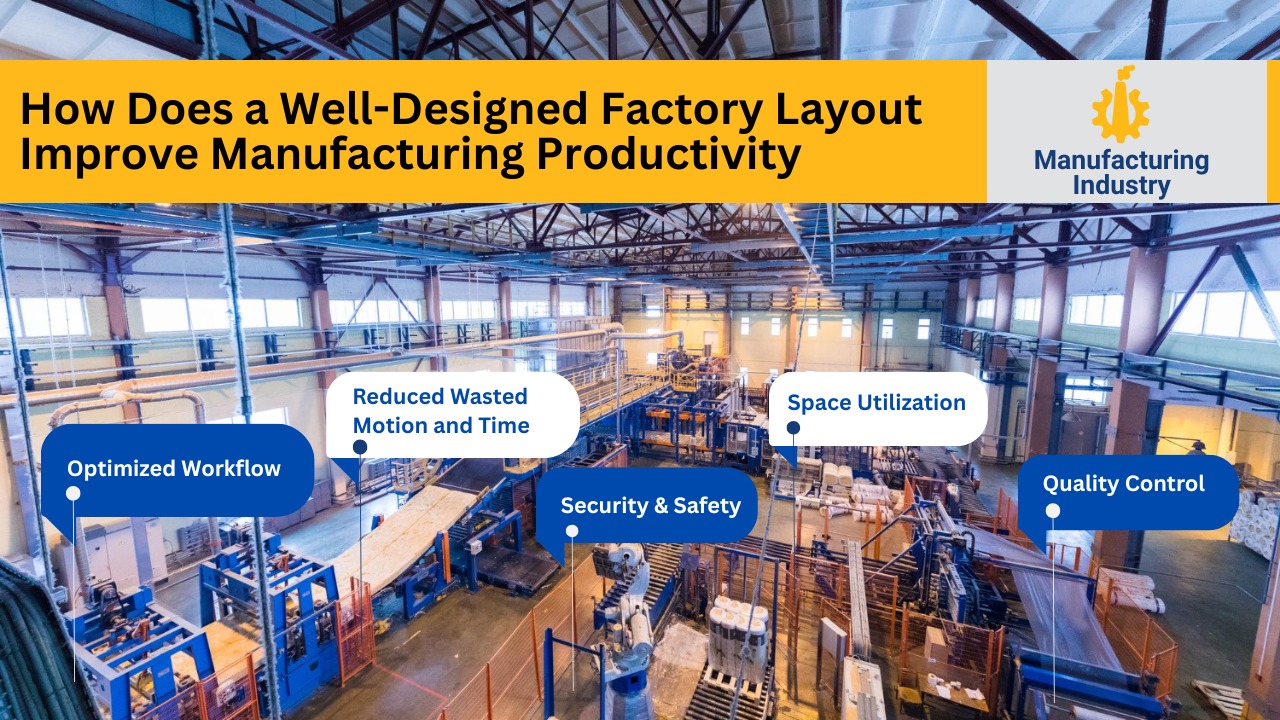
In today’s cutthroat competitive manufacturing environment, everything ever so often depends upon the efficiency of the manufacturing process. One aspect that is often ignored that increases productivity in the factory setting is factory layout. A well-designed factory layout optimizes various spaces that make available a smooth flow of operation processes, waste self-elimination, and improvement in safety and satisfaction among workers. Let’s discuss the top ways in which a well-designed factory layout improves manufacturing productivity.
1. Optimized Workflow
A good layout provides an effective and smooth transition for the movement of materials, equipment, and workers through each step. When machines and workstations are arranged in a way that complements the manufacturing process, unnecessary movement is minimized. Time wasted in material handling will be reduced, bottlenecks will be avoided, and the speed of the entire production cycle will increase. Whether the layout is of a linear production line or a cellular layout for flexible manufacturing, aligning the layout with process flow can tremendously increase output.
2. Reduced Wasted Motion and Time
Poorly designed layouts often cause more walking, lifting, or searching for tools and materials. These small inefficiencies accumulate and cause considerable production losses over time. A smart layout places tools, raw materials, and machines at points that are easily reached, allowing workers to complete their tasks much faster while minimizing unnecessary exertion. Lean manufacturing principles such as the 5S—Sort, Set in order, Shine, Standardize, and Sustain—focus on how an organized layout helps eliminate waste and maximize efficiency.
3. Improved Security & Safety
Productivity is not just a matter of speed; it also concerns worker safety. Cluttered and poorly laid-out factories become areas of hazards. They result in more downtime for an injured employee and possible legal ramifications. A carefully considered factory layout would address clear pathways, visible signs, secure storage for hazardous materials, and unimpeded access to emergency exits. Beyond protecting the worker from injury, a safe work environment also contributes to worker morale, another factor that augments productivity.
4. Better Space Utilization
A well-laid-out factory makes sure that space is put to good use — balancing work area, storage, different types of movement, and possible future expansion. Maximizing space usage leads to smooth running and smooth functioning of the factory, which in turn results in enhanced productivity and profits. With vertical storage, flexible workstations, and multifunctional spaces, limited space can be optimized for utility, allowing manufacturers to increase production without moving to larger premises.
5. Better Communication and Collaboration
Factory layouts that ensure foresight and closeness to related departments foster good communication and cooperation. For example, locating engineering, QC, and production departments in the same vicinity is conducive to speedy decision-making and problem-solving. Quick communication results in significantly reduced downtime due to misunderstandings or waiting for approvals. Centralizing key departments also reduces response times in case of emergencies and urgent matters.
6. Scalability And Flexibility
Markets are usually in flux, and production preferences often change. A rigid factory layout makes it difficult to scale or introduce new products and processes. The trend these days is to build flexibility into factory designs through modular equipment and adaptable workstations that can be easily reconfigured. A flexible layout allows a business to adjust to customer needs and technological and market changes with minimal disruptions. By bringing scalability and flexibility into the design, businesses can stay competitive and responsive to market trends.
7. Better Quality Control
Quality checkpoints located at intervals along the production line help to identify defects early and reduce rework and scrap. A layout that integrates quality control as part of the production offers continuous improvement, which ensures quality assurance and speed. Implementing quality control measures facilitates not just good products but also helps save costs on reworks and scrap. By integrating quality control into the manufacturing process, the business can assure quality and efficiency in all its operations.
Staff Writer
Staff Writer at Manufacturing Industry
Conclusion
In the manufacturing world, productivity is directly related to the efficiency of operations, and the layout of a factory greatly influences that efficiency. Thus, a factory layout in good design will really be a catalyst for sustainable improvements in productivity because it will optimize workflow, reducing all wasteful movements, safety, space, and commute. Therefore, manufacturers looking to improve their operations will always find that investing time and resources in a properly designed facility layout is no longer an option but a must.